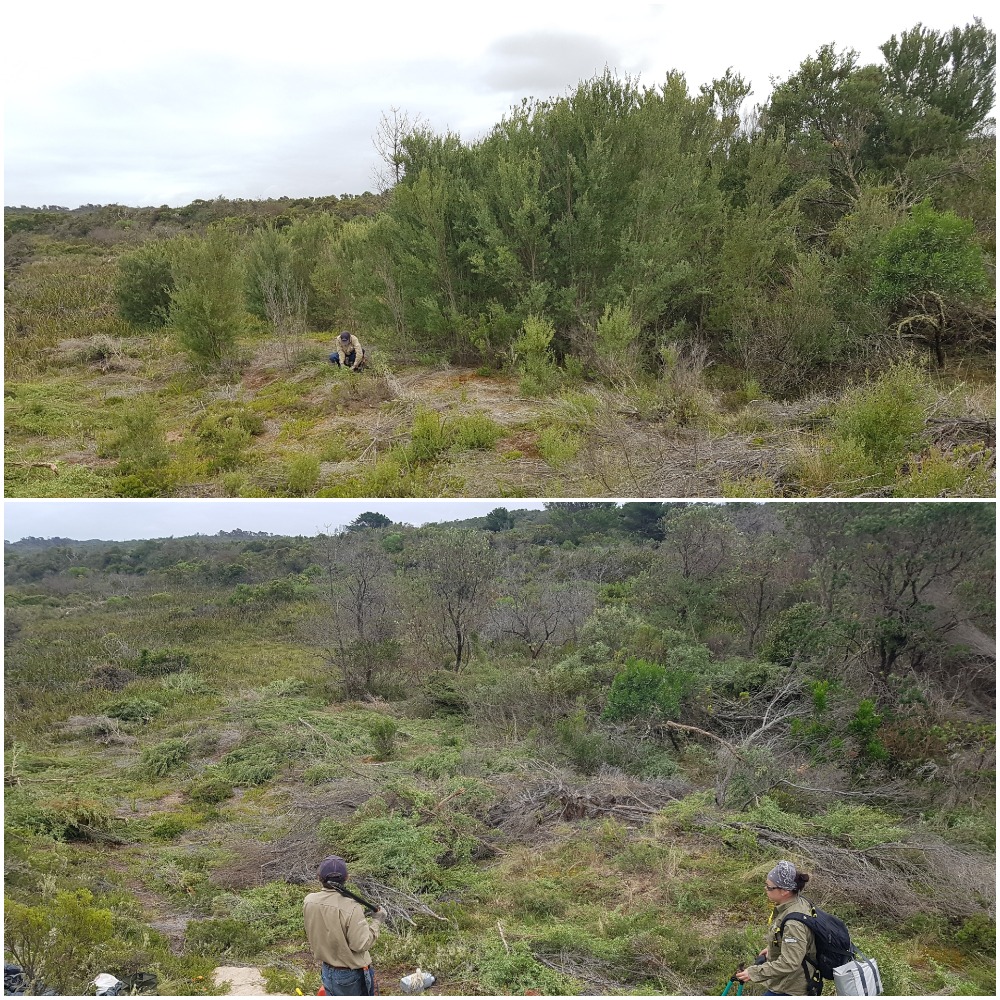NGT bushcare crew tackle ‘dunes’ in Victoria and SA
Getting to sleep at night wasn’t a problem for our bushcare crew members this autumn and early winter. A busy schedule and an overdose of fresh air and hard work had each of our crew sleeping like a log most nights! A couple of these jobs took us down to the extensive shifting dunes of Discovery Bay in south-west Victoria, and up to the ancient coastal dunes of the Naracoorte Range in South East SA – now lying about 80km inland of the current coastline.
At Discovery Bay, NGT has been engaged by the Glenelg Hopkins CMA and Parks Victoria over the last few years to help to protect a rare and valuable limestone ridge vegetation community in a remote part of the dune system. The site is rich in threatened and rare flora, and is threatened by the spread of Coast Tea Tree (Leptospermum laevigatum) which is rapidly colonising parts of the dunes, following a pattern of invasion that has moved through coastal reserves further east, including Wilsons Promontory National Park.

Some winter flowers amongst the ridge vegetation: Correa reflexa (above) and Eriochilus cucculatus (below). Photos: Lu-wei Spinks
This wild site is a privilege to work in, but it’s a rugged hike in while fully loaded with chainsaws, fuel, water, hand tools and safety gear. While the treatment area is a small section of the Discovery Bay dunes, treatment over successive years has removed the mature Tea Tree capable of seed production and allowed multiple sweeps over the site to remove small plants and recent germinants; resulting in a mostly weed-free ridge for now and enabling the persistence of those threatened flora species.

Pre- and post-control of Coast Tea Tree in a buffer zone in the south of the site. Photos: Jonathan Tuck
Moving up to the Naracoorte Range in the Upper SE of SA, the crew helped Trees for Life with a Boneseed eradication effort in Desert Stringybark woodland as part of their Community Helping Cockies project. Part of the project is conducting targeted weed control in high priority feeding habitat for the South-eastern Red-tailed Black-Cockatoo.
This particular infestation is long-established and could have started as a few plants dumped on site, but it grew to eventually dominate a large section of the high quality bush block. The block has been worked on for a number of years, mostly through the Department of Environment & Water, and while there’s some way to go, multiple years of works have trimmed the boundary of the main infestation significantly and stamped out smaller satellite infestations that were establishing in the higher quality parts of the woodland; making eventual removal much more feasible.
Highlights included hearing the calls of red-tails on the worksite, early winter orchids (usually spotted by Sheryl), and getting enough hard work to more than justify an occasional quick stop at the bakery on the drive out to the site!
These jobs were just part of a big workload for the bushcare crew this season, so thanks to all for their dedicated efforts, as well as Gavin Prentice (GHCMA), Dave Pitts (Parks Victoria) and Cassie Hlava (Trees for Life).
